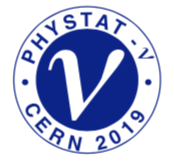Speaker
Description
Detection of galactic supernova neutrinos can provide a valuable information on both supernova physics and neutrino properties.
The large liquid-scintillator detectors of NOvA experiment can be used for such measurement. A dedicated triggering system was designed to perform real-time reconstruction and search for supernova neutrino interaction candidates, extract the time profile of the observed signal and make a decision about the supernova observation.
Unlike many other neutrino detectors NOvA has low overburden. Observation of a supernova neutrino signal in presence of the background, introduced by cosmic rays, requires additional statistical techniques.
The binned likelihood functions are applied to enhance the significance of the observation based on the signal shape.
Also, the combination of observations from both NOvA detectors can provide a better sensitivity to the supernova signal.
